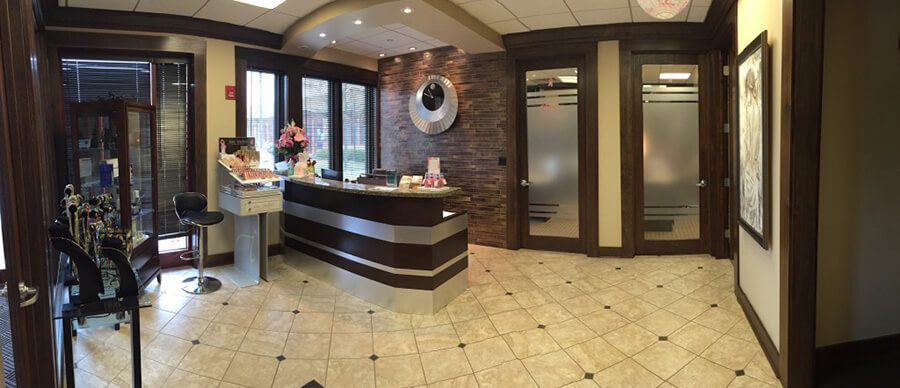Posted in Body Plastic Surgery
What Is a Tummy Tuck (Abdominoplasty)?
A tummy tuck (abdominoplasty) is a plastic surgery procedure that firms, flattens, and smooths the abdominal area. The surgeon removes excess fat and skin and tightens the abdominal muscles. Many people consider a tummy tuck after pregnancy or significant weight loss, when exercise alone cannot fix a protruding belly or loose “apron” of skin. Note that a tummy tuck is not a weight-loss operation; it’s meant for contouring the stomach after you have reached a stable weight.
During surgery, the surgeon makes incisions in the lower abdomen. The skin is lifted to tighten the muscle wall, and extra skin is trimmed away. If needed, liposuction is used to remove stubborn fat deposits. The belly button is typically repositioned so it looks natural in the reshaped belly.
Types of Tummy Tuck Procedures
Surgeons offer different variations of abdominoplasty depending on the patient’s needs:
-
Full (Standard) Tummy Tuck:
A long horizontal incision across the lower abdomen (above the pubic area) is made. The amount of skin removed varies. This allows tightening of the entire abdominal wall and removal of most excess skin. The belly button is usually moved to match the new skin. This is the most common type when there is substantial excess skin.
-
Mini Tummy Tuck (Partial Abdominoplasty):
A shorter incision is made below the belly button. It focuses on the area below the navel and involves less muscle tightening. The belly button is not typically moved. This is suitable if you have only mild to moderate loose skin in the lower abdomen. Recovery is often faster, but it won’t fix skin or muscle issues above the belly button.
-
Extended (Circumferential) Tummy Tuck:
In addition to the front of the abdomen, this procedure removes sagging skin from the hips, flanks, and lower back (often done after massive weight loss). The incision wraps around the sides, effectively reshaping the torso from all sides.
-
Fleur-de-Lis Abdominoplasty:
For patients who lost a very large amount of weight, a “T”-shaped incision is used. In addition to the horizontal cut, a vertical incision is made up the midline of the abdomen. This removes both horizontal and vertical excess skin, achieving a more dramatic tightening. However, it results in a longer scar resembling an upside-down “T.” Fleur-de-lis tucks are generally reserved for extreme cases (e.g., over 100 lbs weight loss) where a standard tuck can’t remove all the loose skin.
-
Reverse Tummy Tuck:
This addresses excess skin in the upper abdomen by making an incision along the lower ribcage (often under the breasts). The skin is pulled upward instead of downward. It’s less common and usually done in combination with other procedures (e.g., breast lift) when there is loose skin above the belly button.
Your surgeon will tailor the approach to your body. They may also recommend combining liposuction for better contour (so-called “lipoabdominoplasty”) and will discuss where the scars will be placed. Generally, scars are kept as low as possible to be hidden by underwear or swimwear.
Who Is a Good Candidate?
Ideal candidates for a tummy tuck:
- Are in good general health with no medical conditions that impair healing.
- Are at a stable, healthy weight (close to ideal weight). Significant future weight changes can affect results.
- Have loose skin or separated abdominal muscles (often after pregnancy or weight loss) that do not improve with diet and exercise.
- Do not plan future pregnancies (a future pregnancy could reverse the tightening).
- Do not smoke (smoking must be stopped well before and after surgery to promote healing).
It’s important to have realistic expectations. A tummy tuck can dramatically flatten and firm your midsection, but it will leave a scar. The surgeon will explain where the scar will be (the scar is permanent but often fades over time and is placed to be easily hidden).
Preparing and Procedure Details
Before surgery, you’ll meet your plastic surgeon for an evaluation. They will review your medical history, any medications/supplements, and discuss your goals. Blood tests and possibly imaging may be done. You’ll be advised to stop smoking and certain medications (like aspirin or anti-inflammatory drugs) that increase bleeding risk.
On surgery day, you’ll be under general anesthesia. The surgeon makes the planned incision(s) and performs the tummy tuck as discussed. If drains are placed, they’ll usually stay in place for a few days to remove excess fluid. The procedure can take 2–5 hours depending on its extent.
Recovery
After a tummy tuck, you can expect:
- Pain and discomfort: You’ll have pain in the abdomen for several days. This is managed with pain medication. Most patients feel significantly better after 1 week.
- Swelling and bruising: These are normal and will gradually decrease over weeks. You may feel tightness or pulling in your abdomen as the muscles settle.
- Activity restrictions: You should walk around soon after surgery (to prevent clots), but avoid heavy lifting or strenuous exercise for 4–6 weeks. After that, you can slowly resume normal workouts as allowed by your surgeon.
- Work: Many people take about 2 weeks off work (or more, depending on how physical their job is). Sedentary desk jobs can often be resumed sooner than active jobs.
- Garments: You will wear a compression binder or garment around your midsection for several weeks to support healing and minimize swelling.
- Scar care: The incision scar (across your lower belly, and possibly vertical in a fleur-de-lis) will be red and firm initially. Over time (up to a year), it fades and flattens. Your surgeon may advise massage and sunscreen to help the scar mature.
It can take several months to see the final result. Expect to wait up to 3 months to appreciate the full contour, and scars continue to improve for up to a year.
Results and Maintenance
A tummy tuck removes fat and skin and tightens muscle, so the core result is permanent. However, maintaining a stable weight is key. Pregnancy or significant weight gain after surgery can stretch the abdomen and compromise the result. Many surgeons recommend completing childbearing before this surgery for that reason. With proper nutrition and exercise, most patients enjoy a flat, smooth abdomen for the long term.
Risks and Considerations
Tummy tucks are generally safe but involve major surgery. Possible complications include:
- Scarring: As mentioned, you will have a horizontal scar (and vertical if using fleur-de-lis). The appearance of scars varies; thinner, well-hidden scars are a goal.
- Bleeding/Hematoma: Rarely, bleeding under the skin can occur, requiring drainage.
- Infection: Antibiotics and sterile technique minimize this risk.
- Seroma: Fluid can accumulate under the skin; surgical drains or needle aspiration may be needed.
- Blood clots (DVT/pulmonary embolism): Deep vein clots are a risk in any major surgery. Early walking and possibly blood thinners can reduce this risk.
- Poor wound healing: Smoking or certain medical conditions can make healing slower or cause skin loss along the incision.
- Numbness: You will lose sensation in the skin of the lower abdomen; this usually improves but can be permanent.
- Contour irregularities: Rarely, the final stomach shape might have minor asymmetries or wrinkles.
Your surgeon will discuss how to reduce these risks, such as stopping smoking, optimizing nutrition, and following all pre/post-op instructions.
Conclusion
A tummy tuck (abdominoplasty) can dramatically improve the shape of your abdomen by removing extra skin and tightening muscles. Mini, full, extended, and fleur-de-lis variations allow tailoring the surgery to your needs, whether it’s a small correction or a major post-weight-loss transformation. If you’re considering this procedure, choose a board-certified plastic surgeon to discuss which approach is right for you and how to prepare for a safe recovery. With proper care, most patients achieve a flatter, firmer midsection and are very satisfied with their results.






